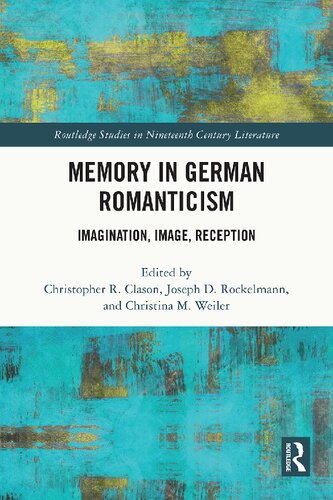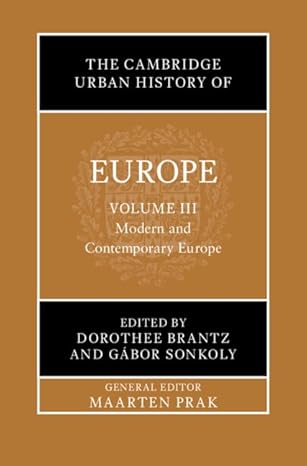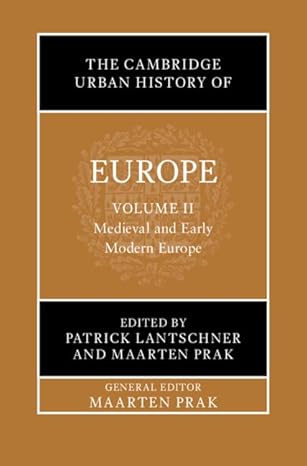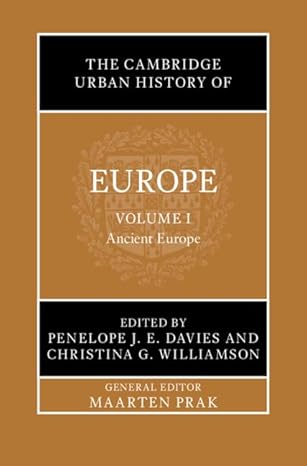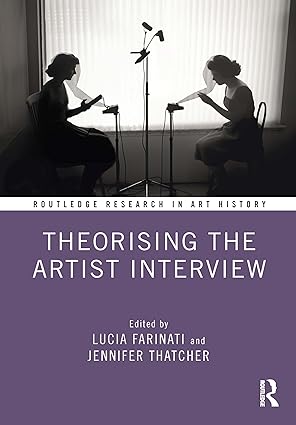Memory in German Romanticism treats memory as a core element in the production and reception of German art and literature of the Romantic era. The contributors explore the artistic expression of memory under the categories of imagination, image, and reception. Romantic literary aesthetics raises the subjective imagination to a level of primary importance for the creation of art. It goes beyond challenging reason and objectivity, two leading intellectual faculties of eighteenth-century Enlightenment, and instead elevates subjective invention to form and sustain memory and imagination. Indeed, memory and imagination, both cognitive functions, seek to assemble the elements of one’s own experience, either directed toward the past (memory) or toward the future (imagination), coherently into a narrative. And like memories, images hold the potential to elicit charged emotional responses; those responses live on through time, becoming part of the spatial and temporal reception of the artist and their work. While imagination generates and images trigger and capture memories, reception creates a temporal-spatial context for art, organizing it and rendering it "memorable," both for good and for bad. Thus, through the categories of imagination, image, and reception, this volume explores the phenomenon of German Romantic memory from different perspectives and in new contexts.
چکیده فارسی
حافظه در رمانتیسیسم آلمانی، حافظه را عنصر اصلی در تولید و دریافت هنر و ادبیات آلمانی دوران رمانتیک می داند. مشارکتکنندگان بیان هنری خاطره را تحت دستههای تخیل، تصویر و دریافت بررسی میکنند. زیبایی شناسی ادبی رمانتیک تخیل ذهنی را به سطحی از اهمیت اولیه برای خلق هنر ارتقا می دهد. فراتر از به چالش کشیدن عقل و عینیت، دو قوه فکری پیشرو در عصر روشنگری قرن هجدهم است، و در عوض اختراع ذهنی را برای شکل دادن و حفظ حافظه و تخیل ارتقا می دهد. در واقع، حافظه و تخیل، هر دو کارکردهای شناختی، به دنبال این هستند که عناصر تجربه خود را، چه به سمت گذشته (خاطره) یا به سمت آینده (تخیل)، به طور منسجم در یک روایت جمع کنند. و مانند خاطرات، تصاویر دارای پتانسیل برای برانگیختن پاسخ های احساسی باردار هستند. این پاسخها در طول زمان زنده میشوند و بخشی از پذیرش مکانی و زمانی هنرمند و آثارشان میشوند. در حالی که تخیل ایجاد می کند و تصاویر باعث ایجاد و ثبت خاطرات می شوند، دریافت یک زمینه زمانی- مکانی برای هنر ایجاد می کند، آن را سازماندهی می کند و آن را "به یاد ماندنی" می کند، هم برای خوب و هم برای بد. بنابراین، این جلد از طریق مقولههای تخیل، تصویر و دریافت، پدیده حافظه رمانتیک آلمانی را از دیدگاههای مختلف و در زمینههای جدید بررسی میکند.
ادامه ...
بستن ...
| Series: |
Routledge Studies in Nineteenth Century Literature |
Periodical: |
|
| Publisher: |
Routledge |
City: |
New York |
| Year: |
2023 |
Edition: |
|
| Language: |
English |
Pages (biblio\tech): |
275\276 |
| ISBN: |
9781032319841, 9781032319865, 9781003312239 |
ادامه ...
بستن ...
